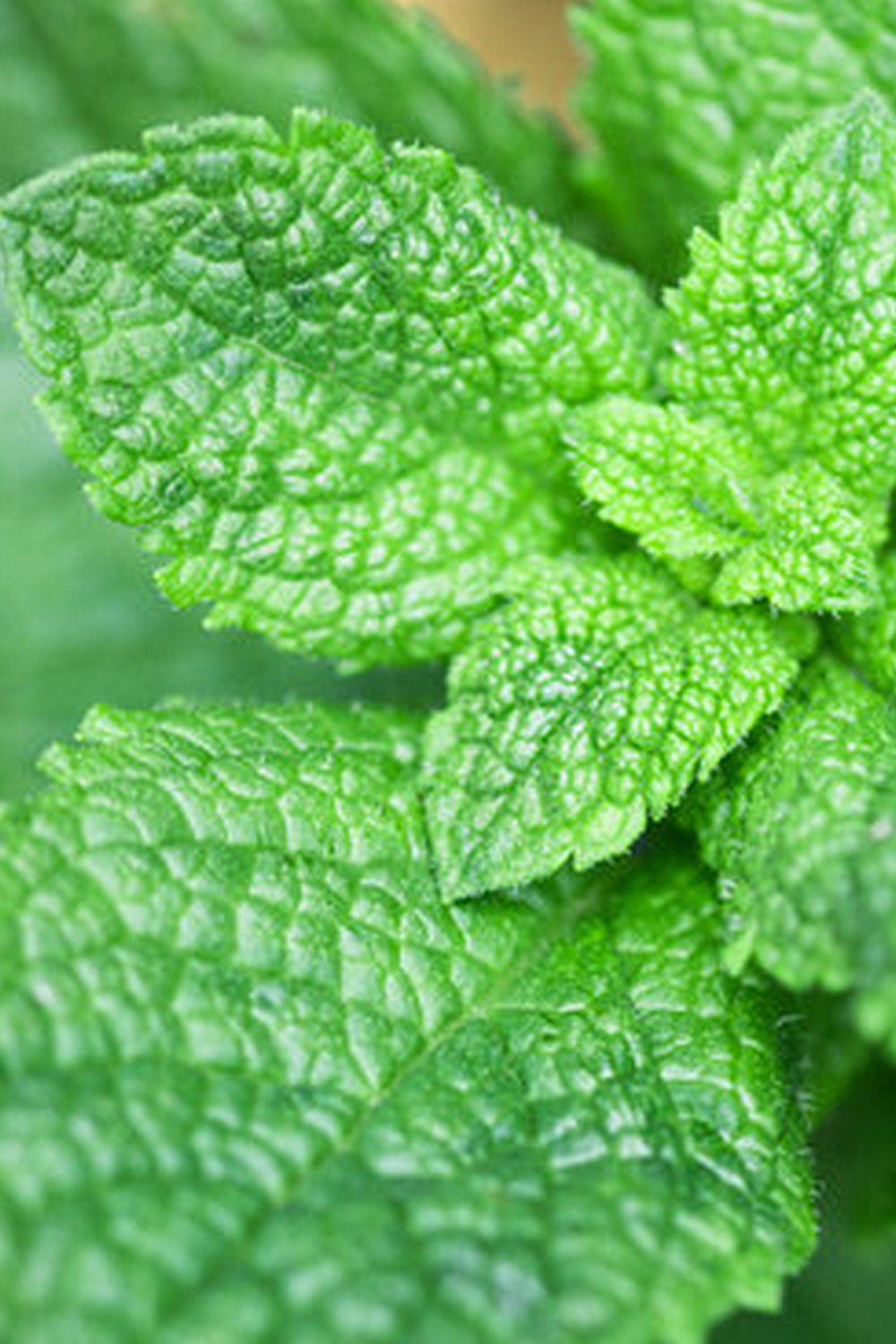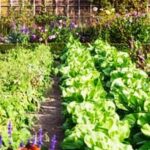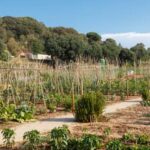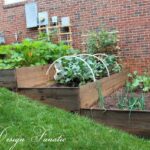Are you looking to start your own backyard vegetable garden, but not sure where to begin? Whether you’re a seasoned gardener or a beginner, creating a plan for your backyard vegetable garden is essential for success. In this article, we will provide you with all the information and tips you need to get started on your backyard vegetable garden plans.
Backyard vegetable gardens offer numerous benefits, including providing fresh and organic produce, reducing grocery bills, promoting physical activity, and connecting with nature. By following the right steps and planning carefully, you can create a thriving vegetable garden right in your own backyard.
From choosing the perfect location and preparing the soil to selecting the best vegetables and designing the layout of your garden, each step is crucial to ensure a successful harvest. We will guide you through all these steps so that you can enjoy the many rewards of growing your own food. So let’s get started on creating your ideal backyard vegetable garden.
Choosing the Right Location for Your Backyard Vegetable Garden
When it comes to setting up a backyard vegetable garden, choosing the right location is crucial for the success of your plants. The ideal spot for a vegetable garden should receive at least 6-8 hours of direct sunlight each day. This allows your plants to thrive and produce a bountiful harvest. Look for an area in your backyard that is clear of any obstructions such as trees or buildings that may cast shade on your garden.
Consider Accessibility and Water Source
In addition to sunlight, consider the proximity of your chosen location to your home. You’ll want it to be easily accessible so that you can tend to your plants regularly without hassle. It’s also important to have a water source nearby, either through a hose or easy access to watering cans. Proper watering is essential for the health and growth of your vegetables, so having a convenient water source will make this task much easier.
Soil Quality
Before finalizing the location for your backyard vegetable garden, assess the quality of the soil in that area. Conduct a soil test to determine its pH level and nutrient content. This will help you understand if there are any amendments needed before planting. Additionally, ensure that the soil has good drainage to prevent waterlogging, which can lead to root rot and other problems for your plants.
Creating a healthy environment from the start by choosing the right location for your vegetable garden will set you up for success in nurturing thriving and fruitful plants.
By taking these factors into consideration when selecting the best location for your backyard vegetable gardens plans, you’re on track towards creating an environment where your vegetables can flourish and provide abundant produce for you and your family.
Preparing the Soil for Your Vegetable Garden
One of the most critical steps in starting a successful backyard vegetable garden is preparing the soil. The quality of your soil will directly impact the health and productivity of your plants. Before you start planting, it’s essential to test your soil to determine its pH levels, nutrient content, and composition. You can purchase DIY soil testing kits or send a sample to a local agricultural extension service for analysis.
Once you have an understanding of your soil’s condition, you can amend it as needed. Adding organic matter such as compost, manure, or leaf mold can improve drainage, water retention, and overall soil structure. Additionally, incorporating organic material into the soil provides essential nutrients for plant growth. It’s recommended to work these amendments into the top 6-8 inches of soil using a garden fork or tiller to ensure even distribution.
It’s also crucial to remove any debris or weeds from the area where your garden will be located. Weeds can compete with your vegetables for water and nutrients and should be eliminated before planting. Taking the time to properly prepare your soil will provide a solid foundation for a thriving backyard vegetable garden.
| Soil Preparation Steps | Importance |
|---|---|
| Test soil pH levels and nutrient content | Allows for targeted amendments |
| Add organic matter (compost, manure, etc.) | Improves soil structure and provides nutrients |
| Remove debris and weeds | Avoids competition for resources with vegetables |
By taking these necessary steps to prepare your soil correctly, you are setting yourself up for success in cultivating healthy and productive vegetables in your backyard garden.
Selecting the Best Vegetables for Your Backyard Garden
When it comes to selecting the best vegetables for your backyard garden, there are several factors to consider. The first thing to keep in mind is what vegetables you and your family enjoy eating. Consider the vegetables that you frequently purchase from the grocery store or farmer’s market, as these will likely thrive in your garden.
Another important factor to consider is your climate and growing zone. Certain vegetables may not grow well in your area, so it’s essential to choose varieties that are well-suited to your specific climate. For example, if you live in a cooler climate, you may want to consider planting cold-hardy vegetables such as broccoli, lettuce, and carrots.
Additionally, think about the amount of space you have available in your backyard vegetable garden. If you have a small space, you may want to focus on compact or dwarf varieties of vegetables that won’t take up too much room. Alternatively, if you have more space to work with, you can consider planting larger crops such as tomatoes, squash, and cucumbers.
It’s also a good idea to think about succession planting, which involves planting different crops throughout the season to make the most of your garden space and extend your harvest. By choosing a variety of vegetables that ripen at different times, you can ensure a continuous supply of fresh produce from your backyard vegetable garden throughout the growing season.
| Vegetable | Best Growing Conditions |
|---|---|
| Tomatoes | Full sun; well-draining soil |
| Lettuce | Cool weather; partial shade |
| Zucchini | Warm weather; plenty of space |
Designing Your Vegetable Garden Layout
When it comes to designing the layout for your backyard vegetable garden, there are several factors to consider in order to maximize space and efficiency. Taking the time to carefully plan out the layout of your garden will not only make for a more visually appealing space, but it will also make it easier to maintain and harvest your crops.
Optimizing Space
One of the first things to consider when designing your vegetable garden layout is how to optimize the available space. This can include using techniques such as intercropping, companion planting, and vertical gardening to make the most of limited space. By planning out where each type of vegetable will go and how they will interact with each other, you can ensure that no space goes to waste.
Consider Accessibility
In addition to maximizing space, it’s important to consider accessibility when designing your garden layout. Placing taller plants towards the back of the garden and shorter plants towards the front can make it easier to reach and harvest your crops without causing damage. Creating pathways or designated areas for maintenance tasks such as watering and weeding can also help keep your garden organized and easy to navigate.
Accounting for Sunlight and Watering Needs
Finally, when designing your garden layout, be sure to take into account the sunlight and watering needs of each type of vegetable you plan on growing. Some vegetables require full sun, while others thrive in partial shade. By strategically placing your plants based on their sunlight requirements, you can ensure that they get the proper amount of light they need. Likewise, grouping together plants with similar watering needs can help streamline your watering routine and prevent over or under-watering.
By carefully considering these factors when designing your vegetable garden layout, you can create a beautiful and productive space that makes efficient use of resources while providing bountiful harvests.
Planting and Maintaining Your Backyard Vegetable Garden
Once you have chosen the best location for your backyard vegetable garden and prepared the soil, it’s time to start planting and maintaining your garden. Here are some essential steps to ensure a successful and thriving vegetable garden:
- Planting Your Vegetables: When it comes to planting your vegetables, make sure to follow the recommended spacing and depth for each type of vegetable. This will allow them to grow properly without competing for space and nutrients. Also, consider using companion planting techniques to maximize the use of space and deter pests.
- Watering Your Garden: Adequate watering is crucial for the health of your plants. Be sure to water deeply and consistently, especially during hot and dry periods. Consider installing a drip irrigation system or soaker hoses to provide a steady supply of water directly to the roots of your plants.
- Mulching: Mulching around your plants can help retain moisture in the soil, suppress weeds, and regulate soil temperature. Use organic materials such as straw, compost, or wood chips as mulch for your vegetable garden.
In addition to planting, watering, and mulching, maintaining your backyard vegetable garden also involves regular care such as fertilizing, pruning, and monitoring for any signs of pests or diseases. By staying proactive in the care of your garden, you can ensure a bountiful harvest of fresh, homegrown vegetables throughout the growing season.
Remember that every backyard vegetable garden is unique, so be attentive to the specific needs of your plants based on their varieties and environmental conditions. With proper maintenance and care, your backyard vegetable garden plans will yield a constant supply of healthy produce for you and your family to enjoy.
Dealing With Pests and Diseases in Your Vegetable Garden
One of the challenges of maintaining a successful backyard vegetable garden is dealing with pests and diseases that can harm your plants. However, there are several strategies that you can employ to minimize the impact of these issues and keep your garden thriving.
One effective way to prevent pests and diseases from attacking your vegetable garden is by practicing good gardening hygiene. This includes regularly removing any dead or decaying plant material, as well as keeping the area around your garden free from weeds. By doing so, you can reduce hiding places for pests and minimize the risk of disease spread.
In addition to maintaining a clean garden environment, it’s also important to regularly inspect your plants for any signs of pest infestation or disease. Early detection can allow you to take quick action to mitigate the problem before it becomes severe. Consider using organic pest control methods, such as introducing beneficial insects or using natural repellents, as a safe alternative to chemical pesticides.
Implementing these practices can help protect your backyard vegetable gardens plans from common pests and diseases, allowing you to enjoy a bountiful harvest of fresh produce throughout the growing season. By being proactive in addressing these challenges, you can ensure that your hard work in creating and tending to your garden will not go to waste due to avoidable pest and disease issues.
By implementing these best practices for managing pests and diseases, you can work toward maintaining a healthy and productive vegetable garden while minimizing the need for harsh chemicals that may harm both your plants and the environment.
Harvesting and Enjoying the Fruits of Your Labor
After putting in the hard work of planting and maintaining your backyard vegetable garden, it’s finally time to reap the rewards of your labor. Harvesting the vegetables from your garden is not only a satisfying and rewarding experience, but it also allows you to enjoy fresh, organic produce right from your own backyard. Here are some tips for harvesting and enjoying the fruits of your labor:
1. Timing is Everything: Different vegetables have different optimal harvest times. Some vegetables, like tomatoes and peppers, should be harvested when they are fully ripe, while others, like leafy greens and herbs, can be picked as soon as they reach a desirable size. Make sure to do some research on the specific vegetables you have planted to know the best time for harvesting.
2. Proper Harvesting Techniques: When harvesting your vegetables, it’s important to use the right techniques to ensure that you don’t damage the plants or reduce their productivity. For example, cucumbers and zucchinis should be cut from the vine using a sharp knife or pruning shears rather than pulled off by hand. Leafy greens can be harvested by simply snipping off individual leaves with scissors.
3. Enjoying Your Homegrown Produce: After harvesting your vegetables, it’s time to enjoy them. There’s nothing quite like cooking with fresh produce from your own garden. Whether you’re making a salad with freshly picked lettuce and tomatoes or incorporating homegrown herbs into your favorite recipes, savoring the flavors of your backyard harvest is truly rewarding.
Remember, one of the greatest benefits of having a backyard vegetable gardens plans is being able to enjoy fresh, organic produce that you have grown yourself. Take pride in knowing that you have cultivated something beautiful and nourishing right in your own backyard.
Conclusion
In conclusion, backyard vegetable gardens plans offer a multitude of benefits that make them a worthwhile endeavor for anyone interested in growing their own fresh produce. From the satisfaction of providing for oneself to the health and environmental benefits, there is much to gain from cultivating a home garden. By following the steps outlined in this article, you can ensure that your backyard vegetable garden is set up for success.
Choosing the right location and properly preparing the soil are crucial first steps in establishing a thriving vegetable garden. Once these foundational tasks are completed, selecting the best vegetables and designing an efficient layout will help maximize yield and minimize maintenance. Planting and maintaining your garden will require dedication and effort, but the reward of a bountiful harvest makes it all worthwhile.
Moreover, dealing with pests and diseases might be challenging at times, but with proper care and attention, potential issues can be mitigated. Finally, harvesting the fruits of your labor is undoubtedly one of the most rewarding aspects of having a backyard vegetable garden. Knowing that you have provided yourself and perhaps others with delicious, home-grown produce is truly gratifying.
Embracing the joy of backyard vegetable gardening is not only fulfilling but also promotes self-sufficiency and sustainability. So why not start planning your own backyard vegetable gardens now?

If you’re looking to get into vegetable gardening, or are just looking for some tips on how to make your current garden better, then you’ve come to the right place! My name is Ethel and I have been gardening for years. In this blog, I’m going to share with you some of my best tips on how to create a successful vegetable garden.





